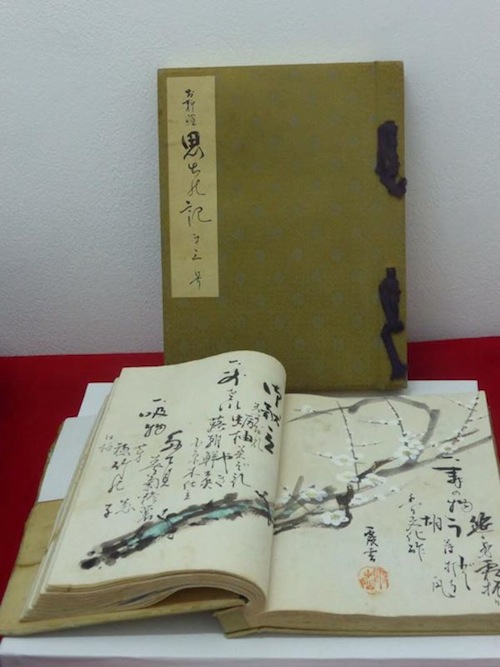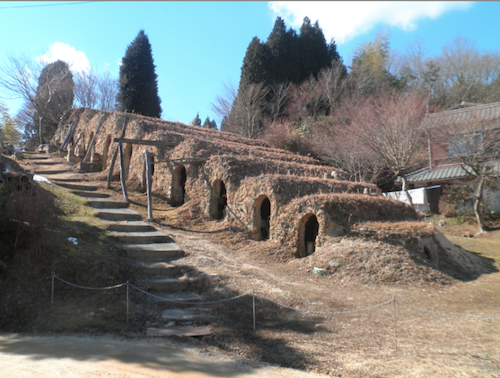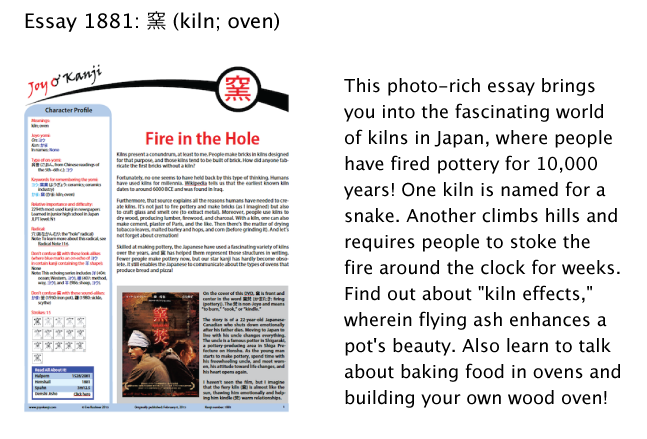The Path That Never Ends
When I spotted this arresting image on Facebook, I was sure I was seeing a grand collection of sumi-e painting:

Photo Credit: Naohiko Nishihata
To my surprise, I learned that the book was merely a menu! The photographer spotted it in a centennial exhibit of old merchant houses in Kanazawa City (Ishikawa Prefecture on Honshu), an exhibit that ends today. Here's how he explained the photo to me:
これは、料亭「つば甚」献立表です。
This is a bill of fare for Tsubajin, a traditional Japanese restaurant.
料亭 (りょうてい: traditional Japanese restaurant (esp. a luxurious one)); つば甚 (つばじん : name of a Kanazawa restaurant); 献立表* (こんだてひょう: menu; list of meals (e.g., for the week))
いわゆる、メニューです。
It's a so-called menu.
いわゆる (so-called)
小生も、このように洒落た冊子の献立表を見るのは、初めてです。
It was the first time I've seen such a stylish menu book.
小生 (しょうせい: I; me (for men)); 洒落た (しゃれた: stylish); 冊子 (さっし: booklet bound with a thread); 見る (みる: to see); 初めて (はじめて: first time)
珍しいので、投稿しました。
It's rare, so I posted it.
珍しい (めずらしい: rare); 投稿 (とうこう: posting)
He added that he's not sure if Tsubajin still uses the menu book (one that my proofreader says hardly anybody can read, given the stylized calligraphy).
There's much to chew on here (no menu pun intended!), but I'd like to turn my attention to the very last kanji compound in his comments:
投稿 (とうこう: contribution; submission; posting (e.g., to a newsgroup or mailing list))
I'm much more familiar with this common word:
載せる (のせる: to mention in writing; make something appear in a particular medium; put in print, publish; send out (e.g., on the airwaves))
The difference, says my proofreader, is as follows:
• 投稿する (also a common word) is what a contributor does by submitting a piece. It isn't necessarily posted or published. That's up to the publisher.
• 載せる is what the publisher or site owner does after choosing to post or publish a contribution.
Let's look at each kanji in 投稿, including its Joyo yomi and Breen's definitions:
投 (357: トウ, な•げる: to throw; discard; abandon; launch into; join; invest in; hurl; give up; sell at a loss)
稿 (1266: コウ: draft; copy; manuscript; straw)
The first kanji is primarily about throwing. That makes sense; 投げる (なげる) is "to throw," and 投手 (とうしゅ) means "(baseball) pitcher." So if you 投稿 something, are you throwing it at a newsgroup or mailing list?
No, even though Breen's many definitions don't indicate this, Halpern says that the second major meaning of 投 is "to send in." He asserts that that's the sense of 投 in 投稿 and in these words:
投資 (とうし: investment)
投書 (とうしょ: contribution, letter (from a reader))
I thought "throwing" and "sending in" seemed far apart, but my proofreader pointed out the bridge: "sending in” is like “giving so that someone else receives,” which is a lot like “throwing" a ball in a game of catch.
Okay, but the "hand" radical 扌 in 投 seems a bit misleading when it comes to sending things in, which is to say "submitting" them, rather than "hurling" them!
The radical of 稿 is even more misleading. It makes me think that the kanji means "tall (高) grain (禾)." The grainy aspect must apply to the last definition, "straw."
Hmm ... I note that 稿 has the non-Joyo kun-yomi of わら, which means "straw" but typically corresponds to the non-Joyo kanji 藁. There's also 草鞋 (わらじ: straw sandals), in which I see わら again. Clearly, 草鞋 must be ateji because 草 cannot have the yomi of わ or わら. But guess what? The non-Joyo kanji 鞋 can have the yomi of わらじ (or くつ) and means "straw sandals." If that's the case, then the 草 is superfluous in 草鞋. That is, 鞋 could have stood alone to convey わらじ and "straw sandals."
I'm sorry. I seem to have wandered off course, tempted by all that straw! So let's return to 稿. Halpern has it as "manuscript, draft, copy" without any mention of straw. Again I feel that straw must have been the original meaning.
And ... aha! Henshall confirms that! He says that the 禾 in 稿 actually means "rice plant," whereas the 高 is "tall." He explains, "The tall part of a grain plant is its stem, which was the original meaning" of 稿, with "straw" being an associated meaning. He notes that people usually convey "straw" today with 藁 and that "manuscript" is a borrowed meaning.
Oh, I just made the connection between 稿 and this word:
原稿用紙 (げんこうようし: gridlike paper on which Japanese students write)
I've blogged about it before, presenting a photo of a metallic 原稿用紙 embedded in a rock.
Anyway, what a word 投稿 is. If one were literal, one would think the word had to do with throwing rice at tall people!
But I'm not complaining. Rather, I'm grateful for all the complications of this script. Because of a fancy menu book, we had the chance to touch on everything from pitching baseballs to investments to straw sandals to manuscript paper! There's so much to learn along the way, and there's a glorious sense that the path never ends and never stops providing discoveries. Following one's nose down kanji trails may be one of the few areas in which meandering pays off!
The newest essay has to do with organic forms of a very different sort. I'm talking about kilns that climb up hills and are called 登り窯 (のぼりがま), such as the one in this photo:

Photo Credit: At by At
An Edo-era 登り窯 in Shigaraki (a pottery-producing area in Shiga Prefecture on Honshu) makes a type of pottery known as 信楽焼 (しがらきやき).
The essay also covers the type of kiln called 穴窯 (あながま). Just after posting the PDF on this site, I came upon a popular Facebook page called Shiho Kanzaki's Anagama. A bit too late—isn't that always the way?! But then if I hadn't written the essay and learned about those kilns, I would have glimpsed that page without having a clue that "anagama" meant anything at all!
Here's a sneak preview of essay 1881:

Have a great weekend!

Comments